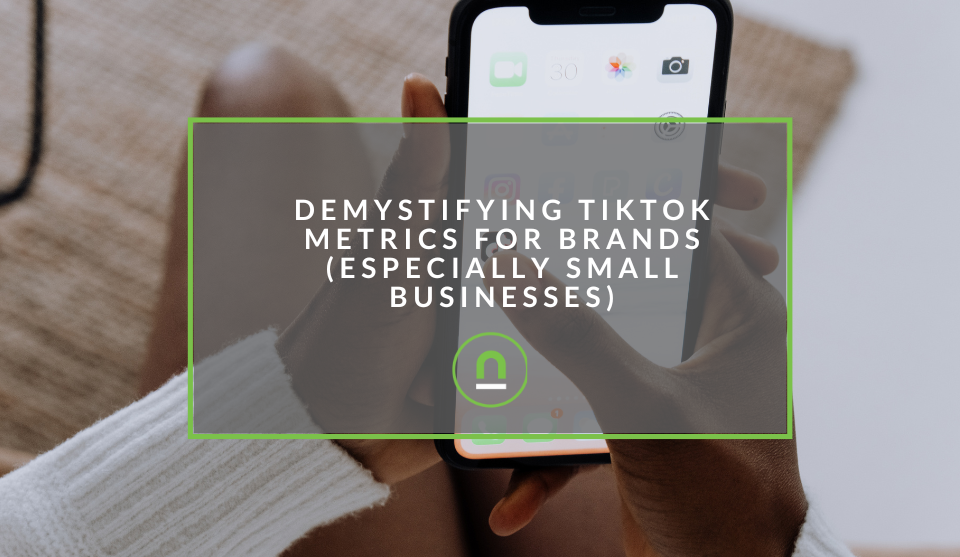Recent posts

Money Talks
The Intricacies of Trading Crypto vs. Forex
03 April 2024

Industry Experts
5 Effective Ways to Drive Traffic to Your Website
19 March 2024

Fur, Fins & Feathers
How To Maintain Your Dog’s Oral Hygiene At Home
14 March 2024

nichemarket Advice
Demystifying TikTok Metrics for Brands (Especially Small Businesses)
13 March 2024
Popular posts
Extravaganza
Trending Music Hashtags To Get Your Posts Noticed
24 August 2018
Geek Chic
How To Fix iPhone/iPad Only Charging In Certain Positions
05 July 2020
Extravaganza
Trending Wedding Hashtags To Get Your Posts Noticed
18 September 2018
Money Talks
How To Find Coupons & Vouchers Online In South Africa
28 March 2019
Does Colour Play A Role In Marketing?
04 May 2018 | 0 comments | Posted by Zapriana Atanassova in Industry Experts
Colour me surprised! Colour theory’s current role in marketing
Colour theory has been used to influence consumer behaviour for a very long time, and it’s hardly a well-kept secret. However, the lack of evidence that specific colours send out a clear-cut message has led to scepticism over how effective and important they still are in marketing.
What is colour theory?
You’ve probably heard about the importance of colour in advertising, and even if you haven’t the concept is quite self-explanatory. Our minds tend to associate certain colours with certain things- for example, green suggests your product is eco-friendly and natural while blue is associated with technology and trustworthiness.
The psychological effects of colours have been studied extensively, and colour theory is a staple for any designer. There are some great online resources such as this article by Ashton Hauff from CoSchedule, which explain the basics of using colour in marketing.
A guessing game? Sort of.
Using colour in marketing and branding is a simple, yet effective tool for communicating certain attitudes and ideas as well as creating a lasting first impression on a consumer. However, it has been met with some scrutiny for being “nothing more than guesswork”.
Marketing involves thinking about what is sought after by consumers today, as well as in the future. So, especially when it comes to branding, the colour you go with must stay for a while. So, making the right colour decisions is important. But how can you be sure?
Studies have shown that colours do, in fact, influence consumer behaviour. However, that doesn’t mean that using a specific colour alone will magically boost sales. Let’s not forget that we are all different, and that colour is not the only factor that influences consumer behaviour. For example, I use certain products despite thinking the colours they use in their branding are horrible.
This is usually because they provide a product or service I cannot find anywhere else, or they’re the most affordable and easily accessible option for me. However, if given a choice, I would go for the brand whose colours attract me more both consciously as well as subconsciously. Colours that suit my style and personality as a consumer.
A fresh new shade.
The attitude many people have regarding colour may be a little bit simplistic and even outdated. Nowadays, we are no longer limited to just using simple colours- technology has given us the ability to add striking effects to even the simplest of campaigns. Furthermore, risk-taking in branding not only has a chance of paying off,
It’s also worth mentioning that people’s attitudes toward certain colours can change over time. For example, using red in fashion may have exuded edginess and youthfulness a few decades ago, but now it’s seen more as classic and even old-fashioned.
Also, may I ask what happens when companies such as Facebook or Ford have a massive scandal? Their blue logos don’t do much to portray “trust” any longer and if there are enough of these scandals in the news, could that not lead to negative connotations surrounding the colour blue? Of course, this is just speculation, but it’s been said that much of colour theory is anyway.
As Gregory Ciotti pointed out, much of colour in advertising is based on hunches- but that's ok! It involves creativity and isn’t an exact science by any means. Much of the data, studies and insights from anecdotal evidence is useful.
However, it’s best to combine these with some thoughtful, creative thinking and a good deal of intuition.
Show your true colours
Using colour remains a great way to create a unique and memorable personality for your company. If you’re working with a talented designer or artist, they can advise you on what colours would be best to go for. If you enjoyed this post and would like hear more from Zapriana then, visit www.arcinteractive.co.
You can also follow Arc Interactive on Facebook, Twitter or on Instagram.
About the author
In her spare time, she enjoys writing poetry, making music and talking about the universe. She’s the newest addition to the Arc Interactive team- a digital marketing agency based in Sandton, Johannesburg.
Contact us
If you feel inspired and want to contribute with a guest post then don’t be shy we’re happy to assist. Simply contact us
You might also like
What Is GEO (Generative Engine Optimization)?
01 March 2024
Posted by Che Kohler in nichemarket Advice
An introduction to generative engine optimisation, how it works and how it could be part of future SEO strategies as a way to generate traffic and co...
Read moreDemystifying TikTok Metrics for Brands (Especially Small Businesses)
13 March 2024
Posted by Che Kohler in nichemarket Advice
A guide to TikTok Metrics and some much-needed context behind them so brands and businesses do not end up overpaying for top-of-funnel vanity metrics...
Read more{{comment.sUserName}}
{{comment.iDayLastEdit}} day ago
{{comment.iDayLastEdit}} days ago
 {{blogcategory.sCategoryName}}
{{blogcategory.sCategoryName}}

